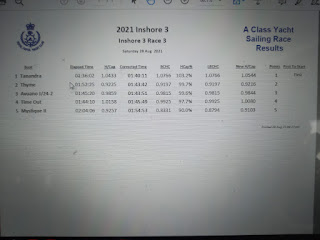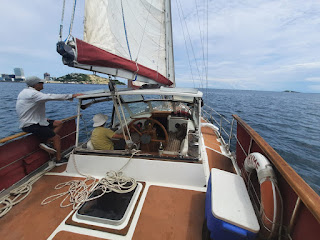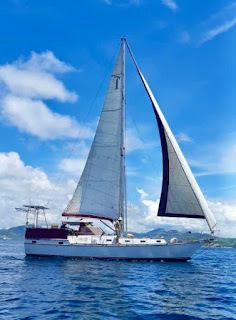Steel Boat Maintenance
Having spent my career fighting rust, first as an industrial painter, then as a coatings and weld inspector, I am regularly asked question on marine coatings systems.
Thought I would share some of my top tips and some background on Thyme and why she still looks so good. My golden rules to start with are:
- Good surface preparation
- Surface Cleanliness
- Following a manufacturers approved coating system and compatible products
- Following the guidance provided in the manufacturers technical or product data sheet (TDS or PDS)
Here is a history of the paint systems we have used:
Original at the time of construction in 1989, Nelson New Zealand
Contractor - Nicholson Protective Coatings
Fully abrasive blasted inside and out to Class 2.5.
Application of Altex Devoe organic epoxy zinc 302
All welds stripe coated with a high solids epoxy, Altrasheild 2000
Airless application of 2 full coats of Altrasheld 2000
Airless application of Polyurethane 239
Refurbish 2001 Sydney Australia
Contractor - Atlas Abrasive Blasting
Mast removed, Vessel lifted from water and transported to blast yard
Spot blast localised areas above water line where coating breakdown evident, below water abrasive blasted to class 2.5
Spot prime above water, fully prime below water using Altex epoxy polyamide primer 201
Spot prime above water, apply by airless spray of a period of days 240 litres of Altex high solids epoxy 236
Apply 2 full coats of polyurethane to entire vessel above waterline, conventional spray method. New 1.2mm polyurethane non slip deck treadApply 120 litres of Altex ablative antifoul below waterline, ABC3
Refurbish 2011 carried out in Kudat Malaysia
Remove fixed cabin top fixed portlights and hatches. Replace hatches and fit new opening portlights
Prepare and apply 2 coats of Interthane 990 polyurethane to all areas from deck level up
Hand prepare and carry out touchup work on internals where coating breakdown evident such as bilge and under sink areas. Apply 2 coats of high build epoxy Interseal 670
Below water pressure wash sand and apply 3 coats of Sigma ablative antifouling
Maintenance painting always carried out utilising epoxy / polyurethane systems and applied in accordance with manufacturer's technical data sheets
Current Coating Dry Film Thicknesses
Cabin Top Sides - 2000 microns
Decks - 1500 to 2000 microns
Hull Above Waterline - 1000 - 1500 microns
Bilge Areas - 1500 to 2000 microns
Engine Room - 1000 - 1500 microns
Cockpit - 800 - 1000 microns
Below Waterline - expected to be greater than 3000 microns
Here are some pics taken a few weeks ago of the dry film thickness. I've taken some in the bilges and some on the cabin sole and top sides.
Its fantastic to enlist the help of Amanda in those hard to reach bilges ;)
Always happy to answer any coatings questions!































